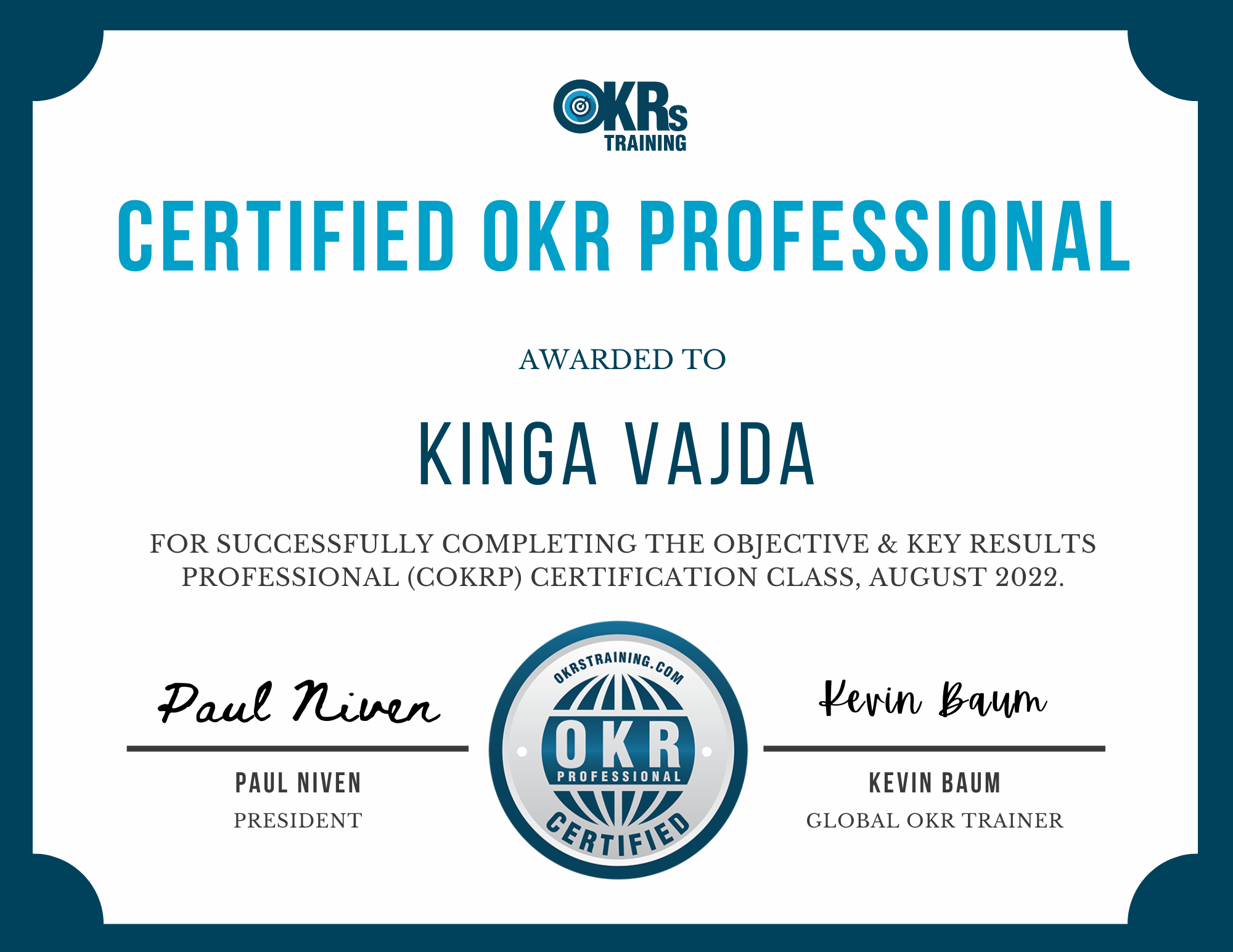I got ahead of the curve on OKRs because I realized I’d been doing the work for years - I just didn’t have the “language” for it.
So I invested in the certification. And then everything changed.
I remember hearing about OKRs for the first time and thinking:
Wait… this is what I’ve been doing all along.
Clarifying strategic goals.
Creating measurable outcomes.
Building alignment through execution.
But the terminology? The structure? The branding around it? That was new.
OKRs stand for Objectives and Key Results.
Think of them as a simple system to align big goals (objectives) with measurable outcomes (key results).
They're not just a buzzword — they're a practical way to move from ideas to focused execution, across teams and companies.
So I made a call: Get certified.
Not just for credibility - but to get fluent in the exact language organizations were about to start demanding.
Leadership isn’t about being first.
It’s about being ready when the moment arrives.
Since then, I’ve used OKRs with clients, teams, and founders - not because it’s trendy, but because it works. It’s how we bring intentions to life. And it’s become part of the systems I now teach through my company, Execute Your Intentions.
I use them to help clients simplify decision-making, align priorities, and stay accountable - without micromanagement or confusion.

🛠 The Way I Use OKRs? Flexible, Practical, Human.
Most systems try to impose structure. Mine adapts to it. I use OKRs as a clarity tool - not a compliance ritual. I believe goals should support the way you work best, not the other way around.
This method meets people where they are, not where a book says they should be.
🌀 Whether you're a solo founder or leading across departments, the goal is always the same: use common sense, make progress, and respect people’s autonomy.
Because no tool - not even a great one - should override your judgment.
This is a snapshot of the OKR structure I now use with clients—designed for clarity, conversation, and practical action.
Why I Share Tools Like This
I’m not here to tell you what to do - I’m here to offer frameworks that help you think more clearly.
Every leader is different. Every organization has its own friction. The goal isn’t perfection - it’s alignment, clarity, and forward motion.
✅ I share tools that are grounded in strategy
✅ I adapt everything through logic and lived experience
✅ And I trust you to make the right calls for your context
Because progress doesn’t come from doing more - it comes from doing what matters, with intention.
